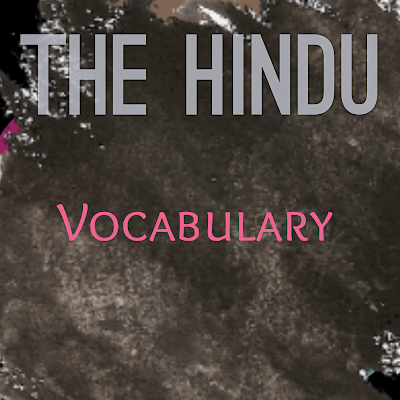NCERT History notes class 6 (chapter 9)
NCERT Class 6 History notes
Chapter 9- "VITAL VILLAGE AND THRIVING TOWNS"
In this chapter of NCERT of history we are gonna read about the lives of the normal people of the villages and towns.
-- Things made up of iron are part of our daily routine. The use of iron began in the subcontinent around 3000 years ago.
Old tools and equipments of iron have been found at various places.
-- Around 2500 years ago, there is evidence for the growing use of iron tools. These included axes for clearing forests, and the iron ploughshare.
==> Village life:
-- Southern India:
-- There were at least three different kinds of people living in most villages in the southern and northern parts of the subcontinent.
-- In the Tamil region, large landowners were known as vellalar, ordinary ploughmen were known as uzhavar, and landless labourers, including slaves, were known as kadaisiyar and adimai.
-- Northern India:
-- The village headman was known as the grama bhojaka.
-- Men from the same family held the position for generations (hereditary).
-- The grama bhojaka was often the largest landowner. Generally, he had slaves and hired workers to cultivate the land. Besides, as he was powerful, the king often used him to collect taxes from the village. He also functioned as a judge, and sometimes as a
policeman.
-- There were other independent farmers, known as grihapatis, most of whom were smaller landowners.
-- There were men and women such as the dasa karmakara, who did not own land, and had to earn a living working on the fields owned by others.
-- In most villages there were also some crafts persons such as the blacksmith, potter, carpenter and weaver.
Cities:
-- Many of the cities that developed from about 2500 years ago were capitals of the mahajanapadas.
-- In many cities, archaeologists have found rows of pots, or ceramic rings arranged one on top of the other.
-- These are known as ring wells.
-- These seem to have been used as toilets in some cases, and as drains and garbage dumps.
-- These ring wells are usually found in individual houses. We have hardly any remains of palaces, markets, or of homes of ordinary people.
-- Perhaps some are yet to be discovered by archaeologists. Others, made of wood, mud brick and thatch, may not have survived.
-- Another way of finding out about early cities is from the accounts of sailors and travellers who visited them. One of the most detailed accounts that have been found wasby an unknown Greek sailor. He described all the ports he visited.
==> Coins:
-- Archaeologists have found several thousands of coins belonging to this period.
-- The earliest coins which were in use for about 500 years were punch marked coins, such as the one shown below.
-- They have been given this name because the designs were punched on to the metal-silver or copper.
==> City functions:
-- These are short inscriptions, recording gifts made by men (and sometimes women) to monasteries and shrines. These were made by kings and queens, officers, merchants, and crafts persons who
lived in the city. For instance, inscriptions from Mathura mention goldsmiths, blacksmiths, weavers, basket makers, garland makers, perfumers.
Crafts and crafts persons:
-- These include extremely fine pottery, known as the Northern Black Polished Ware.
-- It gets its name from the fact that it is generally found in the northern part of the subcontinent.
-- It is usually black in colour, and has a fine sheen.
-- There were famous centres such as Varanasi in the north, and Madurai in the south. Both men and women worked in these centres.
-- Many crafts persons and merchants now formed associations known as shrenis. These shrenis of crafts persons provided training, procured raw material, and distributed the finished product.
Then shrenis of merchants organised the trade.
-- Shrenis also served as banks, where rich men and women deposited money. This was invested, and part of the interest was returned or used to support religious institutions such as monasteries.


Comments
Post a Comment